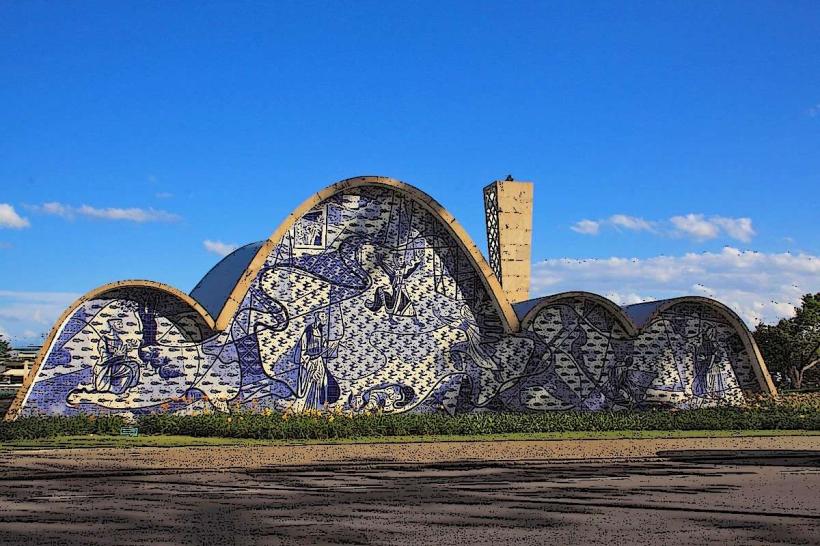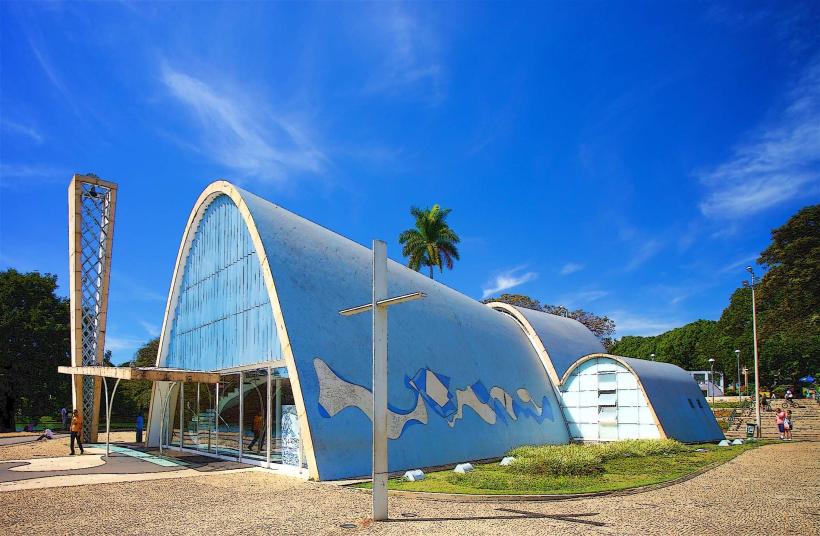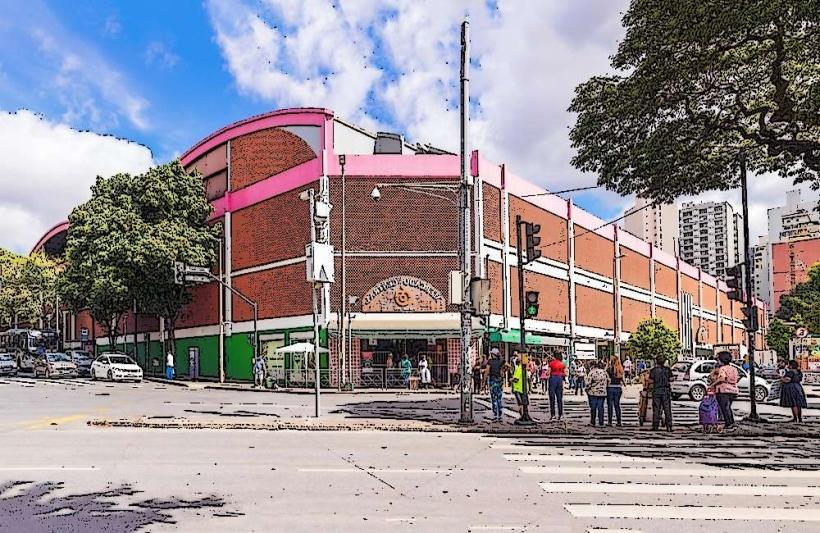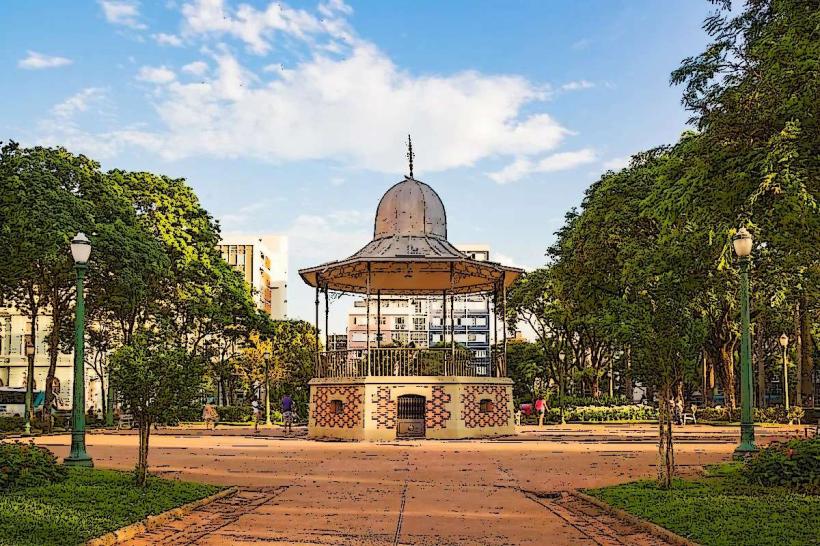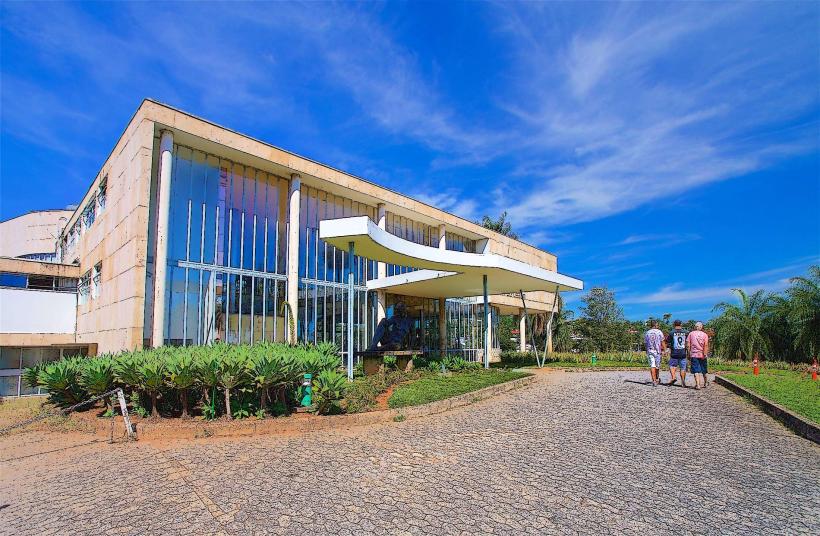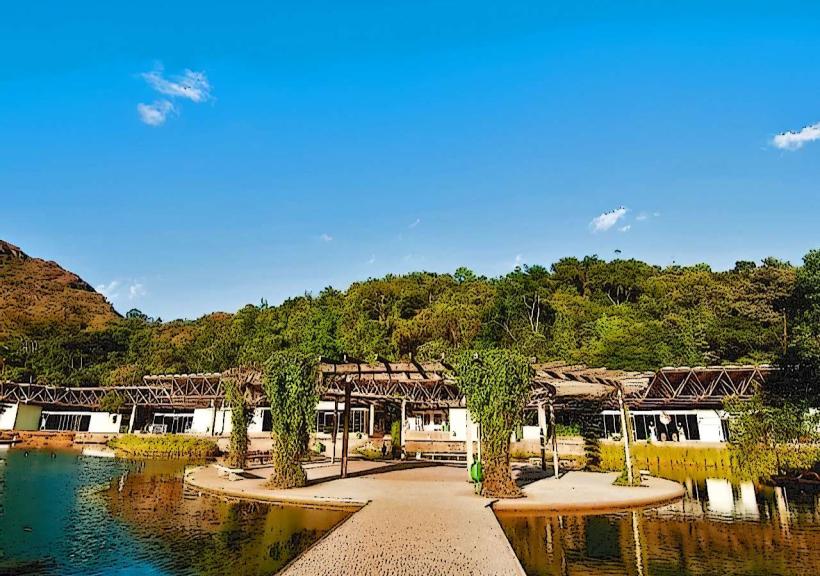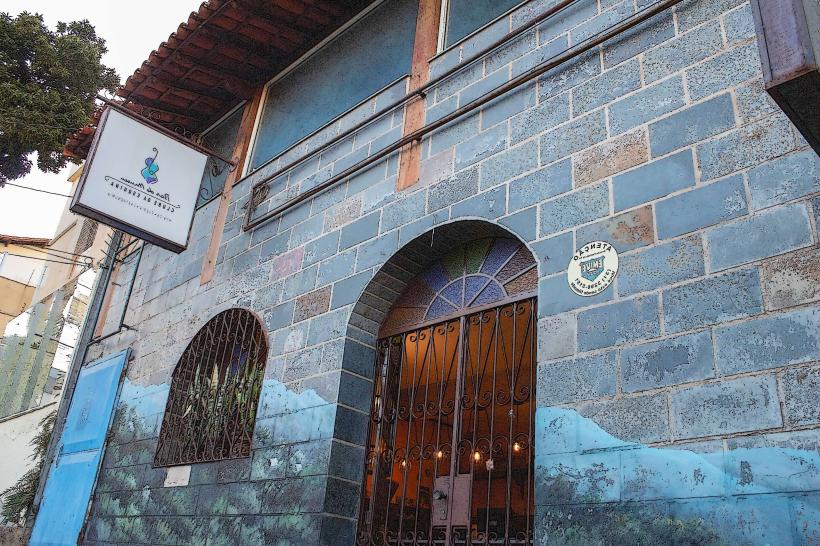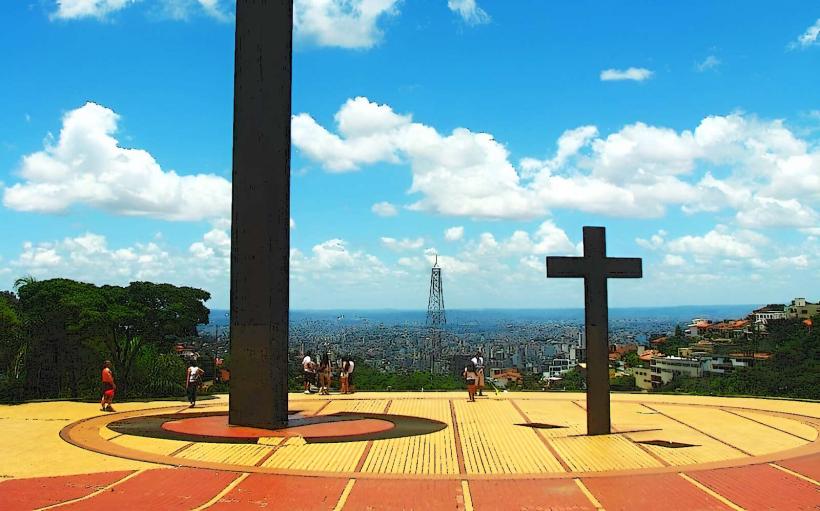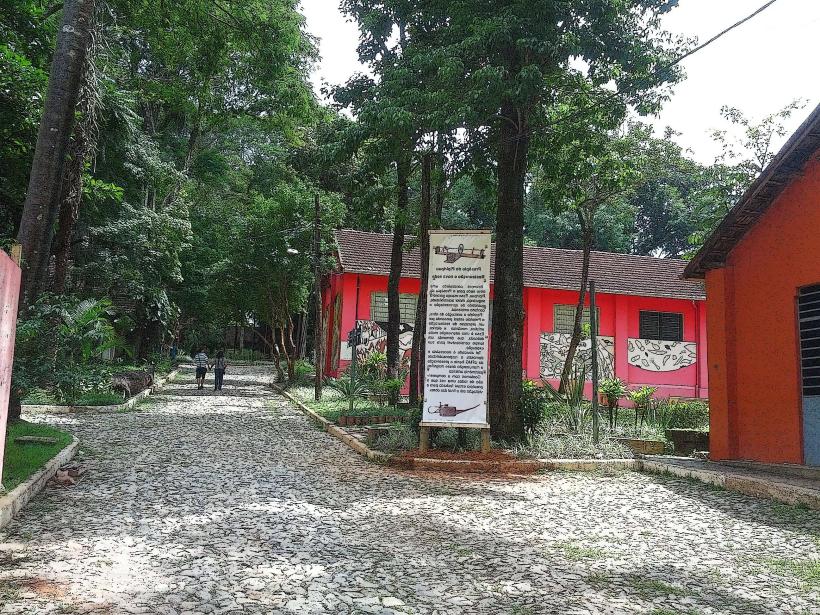Information
Landmark: Mineirão StadiumCity: Belo Horizonte
Country: Brazil
Continent: South America
Mineirão Stadium, Belo Horizonte, Brazil, South America
Overview
Mineirão Stadium, officially called Estádio Governador Magalhães Pinto, stands as one of Brazil’s most storied sports arenas, rising over Belo Horizonte, the bustling capital of Minas Gerais.The stadium’s known not just for hosting big football matches, but for standing as a striking cultural and architectural landmark in the region, its silver arches catching the light at sunset.Here’s a closer look at Mineirão Stadium, where the bright green pitch stretches out under the open sky: 1.Mineirão sits in Belo Horizonte’s Pampulha district, a short walk from the shimmering waters of Lake Pampulha, making it both easy to reach and a standout feature in the city’s skyline.Address: Avenida Antônio Abrahão Caram, 1001 – Pampulha, Belo Horizonte, MG, Brazil, just across from the quiet stretch of palm-lined street.Number two.The Mineirão opened its gates on September 5, 1965, built to welcome roaring crowds for the biggest football matches.Before long, it stood as a proud emblem of sport in Minas Gerais and across Brazil, like a flag snapping in the afternoon wind.They built the stadium during the push to develop the Pampulha area, planning it from the start to handle Belo Horizonte’s surging love for football and the roar of big sports crowds.They named it after Governador Magalhães Pinto, the governor of Minas Gerais at the time, whose push for the project helped turn the stadium’s foundations from bare earth into concrete reality.Three.When it first opened, Mineirão could pack in 70,000 fans, making it one of Brazil’s biggest stadiums at the time, with rows of concrete seats stretching high above the field.Over the years, the stadium saw several upgrades, the biggest coming before the 2014 FIFA World Cup, when crews trimmed its capacity to about 62,000 seats to meet safety rules and give fans more room to breathe.Mineirão’s design follows a classic bowl shape, its sweeping roof stretching over the stands to cast cool shade across the crowd.The stadium’s sharp acoustic design carries every cheer with crystal clarity, and its sleek, modern amenities make it a prime stage for world-class events.Number four.As Brazil geared up for the 2014 FIFA World Cup, the Mineirão stadium got a massive overhaul, from gleaming new seats to upgraded facilities, all to meet FIFA’s demanding tournament standards.The renovation aimed to add more seats, improve accessibility, boost comfort, and bring in modern tech, right down to brighter screens and faster Wi-Fi.The renovations gave the stadium a fresh, modern look, yet you can still feel its century-old character in the worn brick archways.The project added new seating, upgraded the lighting, and freshened up the concourse so fans could enjoy brighter, more welcoming spaces.Number five.Over the years, Mineirão has seen unforgettable football matches and major international tournaments, from roaring World Cup crowds to tense championship finals, earning its place as one of Brazil’s top sporting stages.a.In 2014, Mineirão Stadium stood out as one of the World Cup’s main stages, hosting high-stakes matches-among them a tense semi-final under blazing afternoon sun.One unforgettable game at the stadium was Germany’s clash with England, the roar of the crowd still ringing in my ears.The Brazil semi-final ended in a stunning 7–1 win for Germany, a scoreline still etched in World Cup history like the roar of a stunned crowd.b.The Mineirão has also staged matches in several editions of the Copa América, South America’s top football tournament, where the roar of the crowd could be heard blocks away.CIn 2013, the stadium hosted FIFA Confederations Cup matches, its bright floodlights and roaring crowds proving it still holds a prime spot for major international tournaments.The letter d sat alone, a small curve and line etched in black ink.The Mineirão stadium in Belo Horizonte hosts two of Brazil’s fiercest and most successful clubs-Atlético Mineiro and Cruzeiro-where crowds roar and black-and-white or blue scarves ripple in the stands.When these two clubs face off in the “Clássico Mineiro,” the Mineirão roars with thousands of chanting fans, and the match crackles with the kind of intensity that makes it one of Brazil’s most thrilling football showdowns.Number six.The Mineirão is woven into the heart of Brazilian football, a landmark in Minas Gerais where cheers once shook the concrete stands.It’s set the stage for countless unforgettable moments in Brazilian football, from roaring national championship victories to tense, floodlit battles on the international stage.Fans of Atlético Mineiro and Cruzeiro pack the stadium, turning it into a place they cherish, their chants echoing like rolling thunder through the stands.Seven.Besides hosting sports, Mineirão also comes alive with cultural events, from roaring rock concerts to massive public gatherings.Over the years, the stadium’s stage has lit up for global music giants-Paul McCartney, The Rolling Stones, Bruce Springsteen, even Coldplay-echoing through the night air.With its roomy halls and sleek, modern touches, it’s the perfect spot for hosting events on a grand scale.Eight.Mineirão blends the classic curves of a traditional football stadium with sleek modern tech, creating a place that feels both steeped in history and wired for the future.The roof’s design shields spectators from the sun and rain, yet still lets in light and a soft breeze.Bright new lights now flood the stadium, and the speakers deliver crisp, clear sound, giving both players and fans a better experience.The field meets international standards, while fans enjoy modern touches-VIP boxes, plush seats, and wide concourses where the smell of fresh popcorn drifts through the air.Nine.At Mineirão, visitors can join guided tours that take them through the stadium’s rich history, past legendary matches, and into its lasting role in Brazilian football-right down to the worn steps leading onto the pitch.On these tours, visitors wander through the locker rooms, peek into the press area, step into the VIP lounge, and even walk out onto the sunlit pitch.Football fans can step right into the stadium’s past, hearing the echo of old cheers as they explore its history.Inside the stadium, the Mineirão Museum showcases worn jerseys, old photographs, and other exhibits that trace the venue’s rich history, its place in Brazilian football, and its deeper cultural importance.Ten-the number sits there like a small, solid pebble in your hand.Future and Legacy Mineirão still stands as a true landmark in Belo Horizonte, its towering arches echoing with decades of Brazilian football history.Even after the 2014 World Cup wrapped up, the stadium still buzzes with local matches and hosts international events under its bright floodlights.Thanks to its central location and sleek, modern facilities, it’s set to remain a cornerstone of Brazil’s football scene, where the roar of the crowd can be heard for blocks.Eleven.Getting to Mineirão is easy-it’s linked to the rest of Belo Horizonte by roads, bus lines, and metro, and if you’re nearby, you can simply stroll over, hearing the crowd long before you see the stadium.Parking: There’s plenty of room for cars around the stadium, with reserved spots for VIPs and spaces close to the gates for visitors who need easier access.Public transport’s easy-just hop on the metro and get off at the station a short walk from the stadium, where trains whisk you to the rest of the city.Number twelve sat on the page like a small black mark, sharp and certain.Just a short walk from Mineirão, Lake Pampulha offers the chance to explore the Pampulha Modern Ensemble, home to striking landmarks like the blue-tiled Church of Saint Francis of Assisi, the Pampulha Art Museum, and the lively Pampulha Yacht Club.Mineirinho Arena, one of Belo Horizonte’s top sports spots, sits just a short walk from Mineirão and draws crowds for concerts, basketball games, and all kinds of lively events.Min’s name hung in the air like a small bell, sharp and clear.

